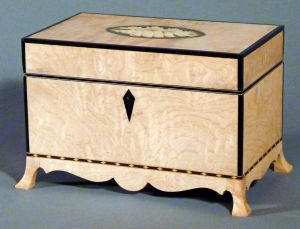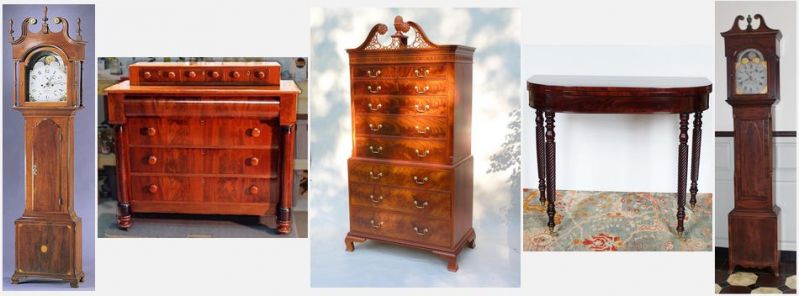
| Mid-Year 2017 |
| Thursday, June 22nd - Monday, June 26th |
| Old Salem, NC |
Detailed Agenda |
|
About the Speakers and Presenters |
|
Location
Museum of Early Southern Decorative Arts
The location for the 2017 Mid-Year will be the Museum of Early Southern Decorative Arts (MESDA). Sign in begins at 3:00 Thursday, June 22nd. Be sure to sign in early!
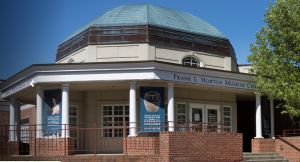 |
One of the museums at Old Salem Museums & Gardens, MESDA is home to the finest collection of southern decorative arts in the country. The museum is internationally recognized for its contributions to the study and understanding of the history, decorative arts, and material culture of the American South. Friday through Sunday, attendees will have full access to MESDA and the Old Salem Museum and Gardens historic site. |
Workshop Rotations
|
Ronnie Young
|
Building a Tea Caddy of the Federal Period
We will discuss the history of the tea caddy form and its importance in America. Photos showing several period pieces will be presented and discussed. My box is not an exact copy of an original, but contains several design elements used in the originals such as French feet, interior lining, and use of inlay.
I will have several boxes to present in various stages of construction so the attendees can follow through the entire process from assembly through final fit-up. Construction will focus on material selection and the splined miter joint for assembling the box; other appropriate joints that could be used will be discussed. We will cut and assemble the spline miter joint using a cutoff table and 1/16” kerf saw blade. Glue-up and clamping will be demonstrated. The 1/8” square edge banding will be cut demonstrating the double 45-degree miter joint at the corners. We will then separate the lid of the box on the tablesaw.
Next will be the cutting of the small French feet for the base of the box, which I will demonstrate on the bandsaw. The skirt will be sawed to shape and attached to the French feet and then to the box. Ornamentation of the box with inlays can be simple or complex, and examples of both will be shown. Finally, we will set the lock and hinges and line the box interior with bookbinder’s paper. Final finishing will be discussed but not demonstrated.
|
| Martin O'Brien |
Patina/Sheen/Texture: What does this mean? Period surfaces and finishes on “New Period Furniture” |
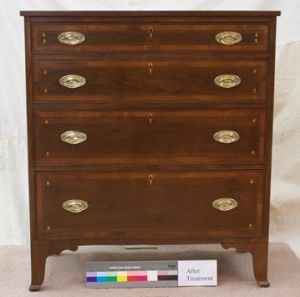 |
Once you’ve built your period reproduction, do you struggle with the finish? What should it look like in terms of gloss level, film thickness, transparency and overall ‘feel’? Should it look ‘new’ or distressed to some level? These are just some of the many tough decisions that not only furniture makers face, but also curators, collectors and patrons. I don’t pretend to be able to solve the dilemma, but I will do the following:
Many craftspeople agree that surface quality and sheen is the ‘final frontier’ of finishing. Join SAPFM mid-year to begin an endless mission to seek out new theories and techniques and to boldly create the right surface on your furniture.
NOTE: In order to facilitate this class, I ask that you study the surface qualities (sheen, varnish thickness and transparency, texture, and variations in color) of all furniture whether it is new assembly line stuff from Asia or antiques in museums. I especially recommend examining the objects in MESDA’s collection the day before this class. On this visit, you should pay special attention to the surfaces (the finishes). Look closely and try to develop a verbal description of how it appears to you. This is a different exercise than looking at an object in terms of joinery, proportion or embellishment. We will start the class with a discussion of what you’ve seen.
|
| Steve Latta | Rural Inlay |
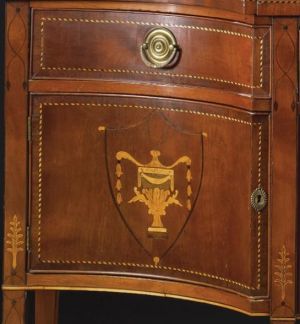 |
Having been a student of inlay for over a quarter of a century, I have always felt the most exciting, innovative and accessible examples of this Federal form of ornamentation were done not in the urban centers such as Baltimore, Philadelphia, Charleston and Boston, but rather in the small towns of rural New England.
These artisans, such as Nathan Lombard from Massachusetts and Major John Dunlap of New Hampshire were well aware of the work going on in the major cities but they lacked the availability of prefabricated bandings, paterae and other embellishments. Instead, they scratched their heads, dug in, and generated some of the most outstanding inlay this country has ever known. Driven by their imaginations and the most fundamental of skills matched by the most basic tooling, these folks created beautiful furniture that stands equally as proud as their urban counterparts in museums all across the country.
This demonstration will NOT be about stringing, banding and bellflowers, although it may touch on them ever so briefly, specifically variable width stringing. It will focus more on herringbone borders, pilaster treatments such as the carrot or icicle, paterae such as the book, diamond or shaded and two-toned ovals. An emphasis will spent on the pictorial work of Nathan Lombard in terms of its execution and the mechanics of its design.
There are no hidden secrets to this work but rather a straight forward approach that you will find easily adaptable to your own work.
|
Speakers
| Daniel Kurt Ackerman | American Makers: Why Things Still Matter in the Digital Age |
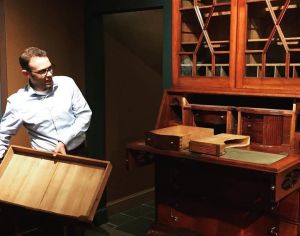 |
The keynote address explores how making can be a way of seeing and understanding the past.
From the eighteenth century workshops of Williamsburg to the twentieth century garages of Silicon Valley, America is a nation of makers. Coming together from diverse backgrounds, American makers crafted both objects and a democracy that strove to be more perfect.
|
| Robert A. Leath | Exploring the craftsmanship of the Walkers |
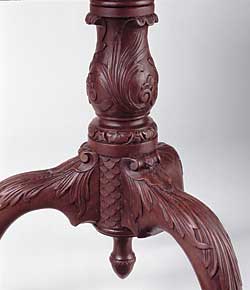 |
Scottish émigré cabinetmaker Robert Walker and his brother William Walker frequently worked together building and furnishing houses in King George County, Virginia. Walker often adapted elements for his furniture from the works of influential London designer Batty Langley. Langley's publications were also well-known to the Walkers' clientele, which included the Washington, Mason, Mercer, and Fairfax families. |
| Johanna Brown | Neat and Simple Elegance: Moravian Decorative Arts in North Carolina |
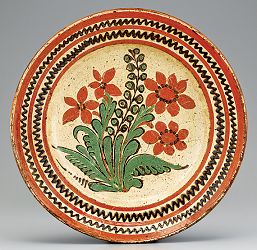 |
Eighteenth and nineteenth century visitors to the Moravian town of Salem, North Carolina, often remarked on the physical and cultural distinctiveness of this isolated backcountry community. The industry of the residents, the operation of a pseudo-guild system within the congregation town, and the deeply religious nature of the settlers fascinated outsiders who were allowed to visit and shop –but not live or work—within the carefully controlled theocracy. The governing boards of the Church certainly influenced the ways artisans worked, the setting of prices and wages, and the interaction of tradesmen with outsiders. Yet, these boards did not dictate style. Moravian artists and artisans in North Carolina produced furniture, pottery, silver, textiles, paintings, and countless other decorative objects. This material reflects the cultural backgrounds of the Moravian settlers and their ultimate assimilation within the backcountry South giving rise to a distinct aesthetic marked by “neat and simple elegance.” |
| June D. Lucas | Furniture Made in North Carolina’s Back Counties |
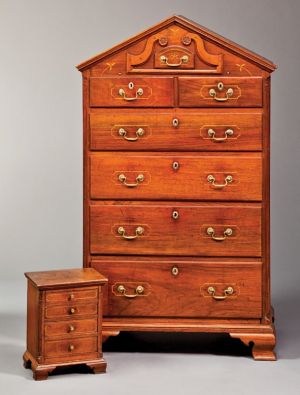 |
"Some of the nisest furneter . . .ever [you] did see” Like Pennsylvania, North Carolina was settled by "a great mixed multitude," resulting in furniture production that was as varied as the people who settled there. This presentation will highlight many of the major non-Moravian furniture groups produced in Piedmont North Carolina during the late eighteenth and early nineteenth centuries. It will focus on the ethnic diversity of the state's craftsmen--Germans, Scotch-Irish, and English--as well as specific construction techniques that help identify various cabinetmaking shops. |
| Brian Coe | Germanic Woodworking in America |
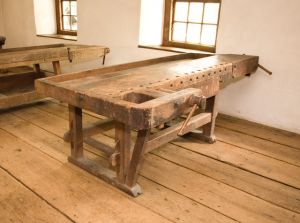 |
The workbench is the foundation upon which all the work of the shop is performed, so it is only proper to also explore the tools on the bench. We will look at original German tools of the time period and discuss the parallels and differences between them and their English and American counterparts. Participants will get an in-depth study of the history, design, and uses of the eight original workbenches in the Old Salem Collection. These span almost 100 years of shop furniture design and function. Germanic construction techniques, vise construction, and the Americanization of Continental European designs will all be discussed.
Demonstrations will show the unique continental tools in use, some of which are relatively unknown in modern American woodworking.
|
Day Trips (optional, not included in the conference fee)
Monday, June 26th: Ayr Mount |
|
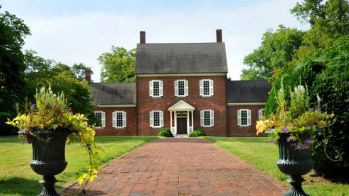 |
Ayr Mount is a Federal-era plantation house built in 1815 in Hillsborough, North Carolina by William Kirkland. He named the house after his birthplace in Scotland. It was the first major residence built of brick in this area of predominantly Colonial-era wood frame houses. Maximum Attendees: 48 Photography Policy:
|
Spouse/Guest Activities
Classes
Note: All classes start at 1:00 except the second Silk Ribbon Embrodery class, which starts at 3:00. The Two Hour MESDA Guided Tour also starts at 1:00. The number of classes you sign up for should be less than or equal to the number of guests you register.
| Paste Paper | |
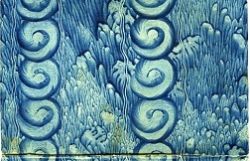 |
Learn how to make paste papers, a specialty of Moravian Single Sisters in Germany and America. Make several sheets to take home with you, as well as a blank book with a paper paste cover. Class size: 8 minimum, 10 maximum. |
| Pottery | |
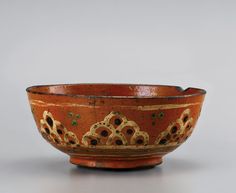 |
Learn how to make a pot on a traditional kickwheel . You will also make a tart dish from an original Salem mold. Items will be fired, glazed, and sent to you approximately two months after the class. Class size: 8 minimum, 10 maximum. |
| Hearthside Cooking | |
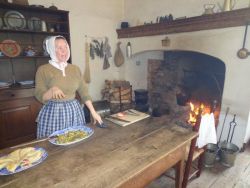 |
Join in fun around the fire and learn to cook seasonal 18th century receipts (recipes) using various hearth-cooking techniques in our historic kitchen. After the work is done, enjoy sampling the dishes you have made! Class size: 8 minimum, 10 maximum. |
| Silk Ribbon Embroidery | |
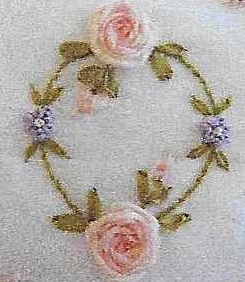 |
In the 19th century, students at the Salem Female Academy were taught how to make beautiful silk ribbon embroideries: We still have the finest examples in our collection today. Learn how to make silk ribbon roses and a few other stitches to complete a small project on linen. 1:00 Class size: 8 minimum, 10 maximum (full). 3:00 Class size: 8 minimum, 10 maximum. |
Tours |
|
| Note: The Horticulture, Trees and Gardens and One Hour MESDA Guided Tours all start at 11:00. The Two Hour MESDA Guided Tour starts at 1:00. The number of tours you sign up for should be less than or equal to the number of guests you register. | |
| Horticulture Behind the Scenes | |
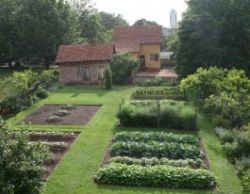 |
Tour size: 20 maximum. |
| Trees and Gardens of Old Salem | |
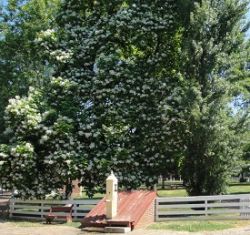 |
Tour size: 20 maximum. |
| One Hour MESDA Guided Tour | |
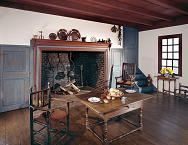 |
Tour size: 12 maximum. |
| Two Hour MESDA Guided Tour | |
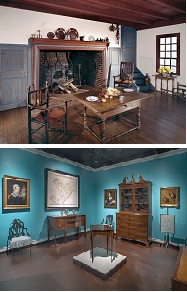 |
Tour size: 12 maximum. |
Lodging
| Note: Mention you are with SAPFM to obtain a favorable rate. | |||||
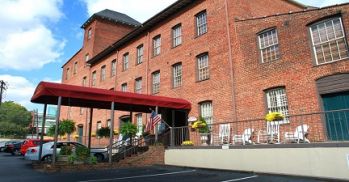 |
200 Brookstown Ave
Winston-Salem, NC
(800) 845-4262
What began as the Salem Manufacturing Company and was one of the first mills in the south to utilize electric lighting is now a newly renovated seventy guest room inn.
TripAdvisor Rating: 4.5, 555 reviews
Rates:
|
||||
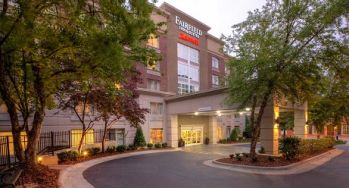 |
125 South Main Street
Winston-Salem, NC
Walk to Old Salem Museum and Gardens, Salem College and the vibrant Arts District in downtown Winston-Salem. Free parking in our adjacent parking garage. Complimentary breakfast.
TripAdvisor Rating: 4.5, 134 reviews
Rates:
|
||||
Costs
|
|||||||||||||||||||||||||||||||||||||||||||||||||||||||||||||||||||||||||||
Map
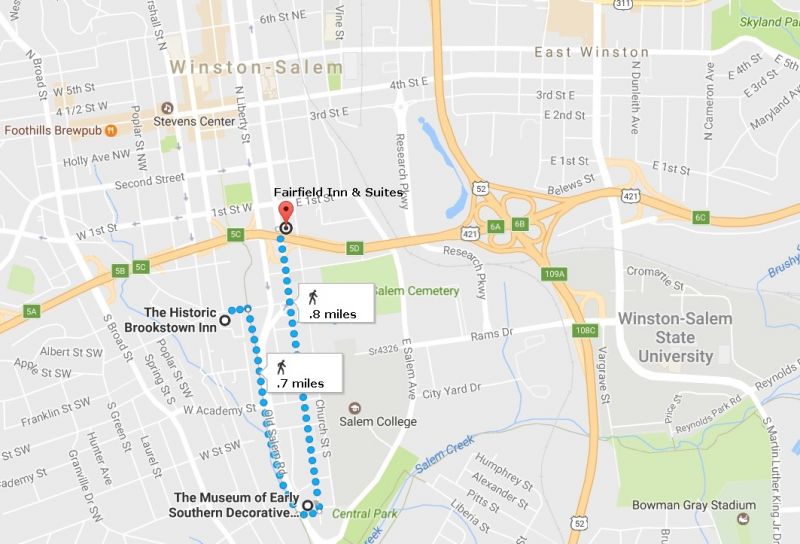 |
|
| Museum of Early Southern Decorative Arts | |
| 924 South Main Street | |
| Winston-Salem, NC 27101 | |

